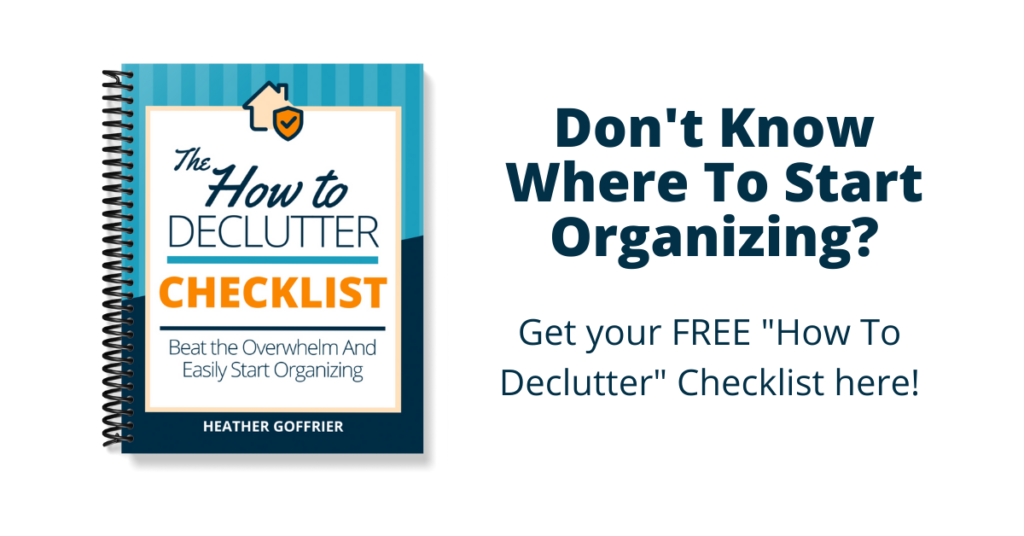Does your new baby fight nap time and get cranky easily? You might be missing these 15 super important newborn sleep cues! Learn them here plus get a free printable checklist “How To Declutter: Beat The Overwhelm and Easily Start Organizing.” Click this button to download:
This is the fifth post in my “Newborn Sleep” Series. Be sure to check out the other posts in the series and stay tuned for new additions!
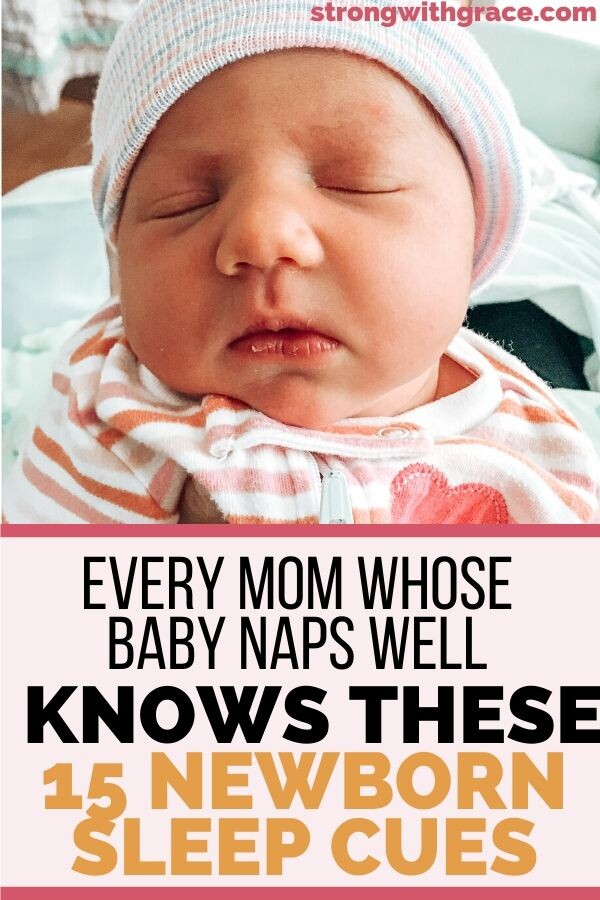
It’s the middle of the afternoon and you’ve worked for 45 minutes to get your baby to nap, but she still won’t do it.
Yup, I’ve been there.
If you’re like me, you’ve tried every trick for getting newborn to sleep. Now you feel like a failure and are even tempted to nap with your baby, even though you know it’s not recommended.
But let’s face it, you’re exhausted! Your baby never seems tired, she doesn’t like her crib… what gives?!
Table of Contents
What Are You Missing?
Every baby has cranky moments and bad days every once in a while, but if your newborn is always fighting nap time, it’s possible you’re missing some subtle but important sleep cues.
Newborn sleep cues help you know right when to put baby down for a nap. Like, the exact moment to head for the nursery.
And when you get her down in time, she’ll fall asleep much easier, with less fussing and more peaceful relax time for you.
But when you miss that window, you’ll have an overtired, cranky and hard-to-get-down baby.
No thanks.
What Are Newborn Sleep Cues?
Newborn sleep cues are the signals every baby sends that show they’re getting tired. Even though she can’t call out, “Mommy I’m tired,” your baby communicates exactly that with her body language.
Don’t believe me? Start to watch your infant like an anteater on an ant hill:
- Are his hands flopping around more wildly than usual?
- Is he turning his face away from others?
- Maybe she rubs her ears or starts to stare off into space.
Each of those subtle actions are baby sleep cues that you can use, if you’re on their trail, to get your kiddo to bed faster than a hound dog after a squirrel.
RELATED: 17 INSANELY POWERFUL TIPS FOR GETTING NEWBORN TO SLEEP AT NIGHT
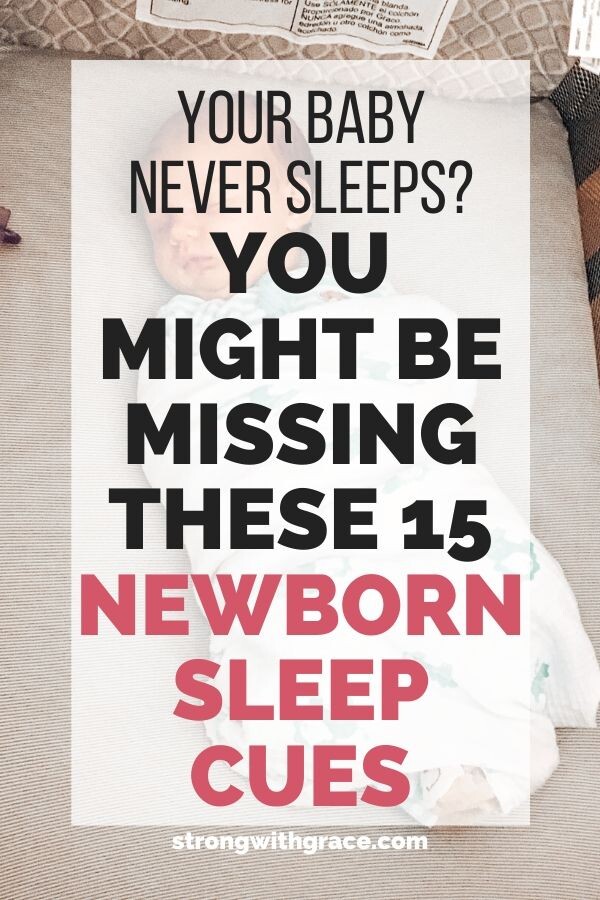
How Do Newborn Sleep Cues Help?
Newborn sleep cues help moms in the following ways:
1- You’ll know when to put your baby down for a nap.
It’s likely that your baby will show sleep cues way before you expect him to. But when you see that he’s signaling “I’m tired,” you can know with confidence that it’s time for him to zonk out.
2- Using sleep cues makes it easier for baby to fall asleep.
When you use newborn sleep cues, you’ll be able to catch your baby in her perfect “sleep window.”
A baby’s sleep window is when she’s most primed to go to sleep easily. Miss that window, and you’ll have a fussy, worked up and overtired baby on your hands.
So much harder to put down!
But if you capitalize on the signals your baby gives, you can swoop her up and sneak her back to her cozy crib for some sweet dreaming. By getting her tucked into bed, you’ll be helping her give in to her own body clock that’s saying it’s time to rest.
If you capitalize on the signals your baby gives, you can swoop her up and sneak her back to her cozy crib for some sweet dreaming. By getting her tucked into bed, you'll be helping her give in to her own body clock that's saying… Share on XRELATED: 21 TOP BABY SLEEPING PRODUCTS TO KEEP BABY SNUG, SAFE AND ASLEEP ALL NIGHT
3- Less stress for mom
What mom wouldn’t love spending less time getting their newborn down for a nap, while needing to use less soothing and less shushing?
All that equals more time for eating an actual meal, catching up on cleaning, or folding tiny adorable baby laundry while watching Fixer Upper reruns.
Yassss!
4- WOW others with your baby whispering abilities
Since not everyone knows these tips to get baby to sleep, some might object to you taking baby away.
For example, when you scoop baby up and declare “it’s bedtime,” Great Aunt Wanda who’s visiting might protest and question whether her little sweetie pie is ready for a nap.
But you’ll be able to return with a smile and a wink (without baby) after successfully getting your little one down for a peaceful siesta.
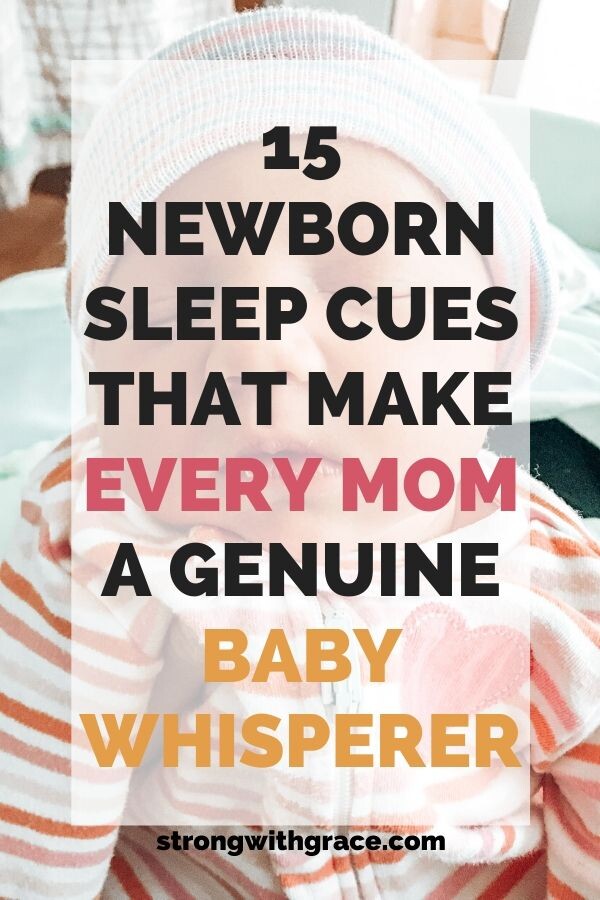
How Long Should I Expect Baby To Be Awake Before Showing Sleep Cues?
When you first get baby home from the hospital, you’ll have a great opportunity to start studying your newborn.
You’ll notice right away how long he stays awake after eating. For brand new tykes, it’s usually just a few minutes, or sometimes not at all!
With all the snuggles and sleeping day and night, you’ll be hyper aware of his awake time. Use those times to watch carefully for any signs that he’s getting tired (see the list of newborn sleep cues below!)
A good rule of thumb for baby’s awake time during the first two months is between 0-60 minutes, with the minutes lengthening out by age.
A good rule of thumb for baby’s awake time during the first two months is between 0-60 minutes, with the minutes lengthening out by age. #newbornsleep #newmom Share on XIt depends of course on whether he was born early or late, how much he weighs, and personality factors too. But in general, your baby should be back down for a nap after one hour of being up.
That includes feeding time! (And yes, I know that sometimes early nursing periods can be 45+ minutes. My oldest was a slow eater, almost drove me bananas!)
RELATED: WHEN IS THE BEST TIME TO START AN INFANT SLEEP SCHEDULE?
Logging Baby’s Sleep And Activities Helps You Become Aware Of Sleep Cues
For help in knowing when to expect baby to start acting tired, it’s a good idea to log your baby’s routine, at least for the first few weeks.
If yesterday he was awake for 30 minutes after lunch, you know to pay closer attention to any sleep cues he starts dishing out today around that time.
You’ll be amazed at how a gentle and flexible newborn baby schedule can help you predict what baby wants and needs next. By logging their activities, you’ll be able to work with your baby’s current habits to help them get regular naps and even lengthen out night sleep!
Talk about way less stress!
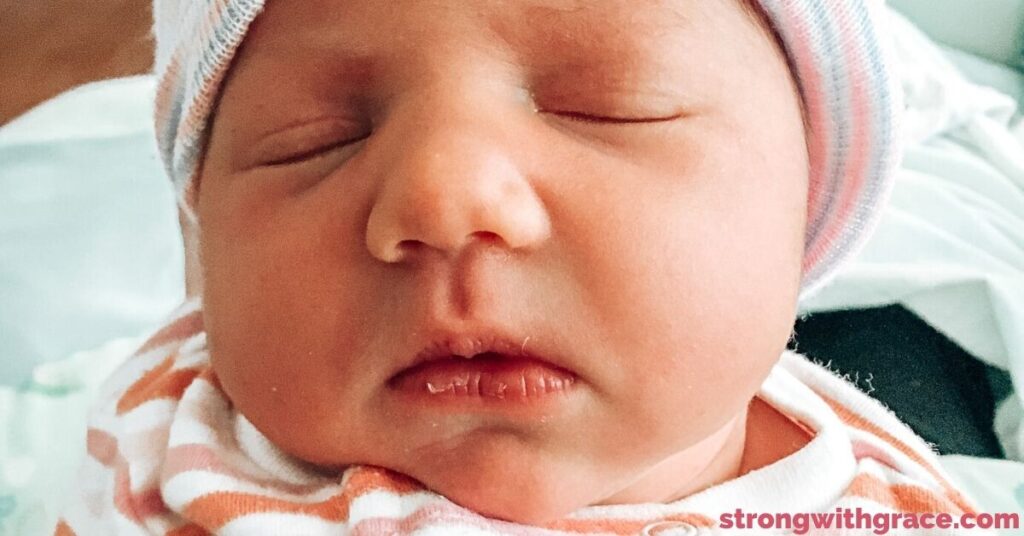
And here’s the moment we’ve all been waiting for! Introducing,
The 15 Most Common Newborn Sleep Cues
- Blank stares, eyes glazing
- Being less wiggly
- Slowing down, more calm
- Stopping making noises, being quieter
- Less interactive
- Sucking is weaker or slower
- Disengaging or avoiding eye contact
- Pulling away from others
- Red around the eyes
- Yawning
- Rubbing eyes
- Has a Sleepy look
- Starts to get fussy, hard to keep happy
- Crying
- Waving and jerking limbs around
We hope you enjoy the products we recommend! This post may contain affiliate links. That means we get a portion of the commission if you click through and make a purchase, but you don’t pay a cent more. Thank you for supporting our small business as we strive to help you rock mom life!
What To Do After Seeing A Sleep Cue
According to Tracy Hogg who wrote, “Secrets Of The Baby Whisperer,” it’s vital to get your baby into bed “by the third yawn.”
That’s the advice I’ve always followed, and it’s never let me down. Once I started seeing sleep cues, I would dance her back to her private retreat center in her pack n play or crib.
Then I’d change her diaper, get her all tucked into a swaddle or sleep sack (or Baby Merlin’s Sleep Suit— don’t knock it till you’ve tried it!) and she would conk out.
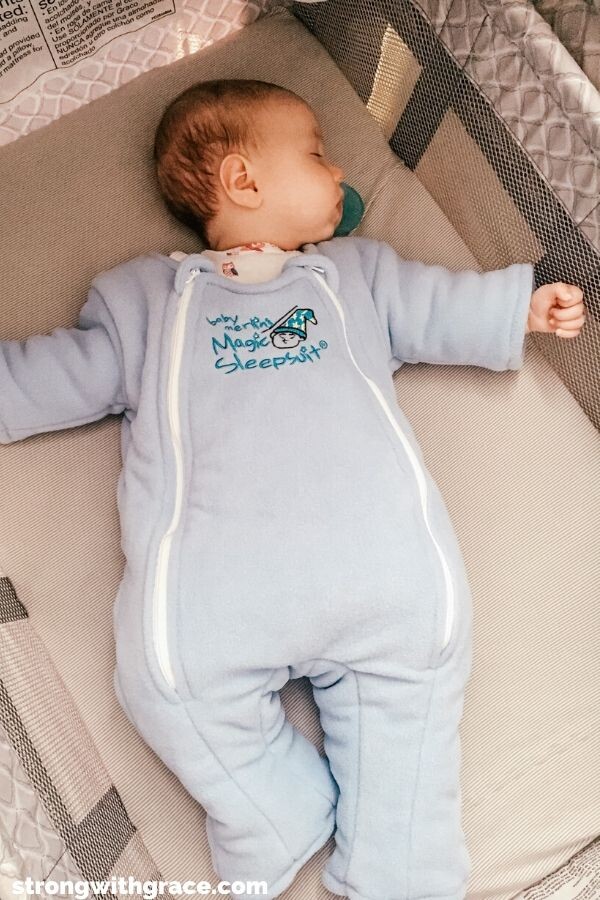
Cues That Baby is Overtired
As you get to know your baby’s sleep cues, you’ll also become familiar with her cues for being overtired.
Because while we all have the best intentions for getting them down by the third yawn, sometimes it’s not possible.
Maybe you’re at a social gathering and you can’t get away. (Not likely during these strange times, but someday maybe that will be a reality!)
Or you just don’t want to pause your show quite yet, or you’re finally getting the chance to talk to your spouse and catch up.
Whatever the reason, overtired happens. Here’s how you can recognize it:
- wailing, intense crying
- Clenched fists
- Arching back
- Dropping off to sleep rapidly with barely any wake time (unless brand spankin’ new)
After these “wonderful” actions from your baby, you’ll be more likely to capitalize on those early sleep cues and get baby down for a nap pronto the next time!
RELATED: 7 NEWBORN BABY SCHEDULE MISTAKES TO AVOID
Babies get overtired if they're not put down for a nap in time. Here's how you can recognize it: wailing, intense crying, clenched fists, arching back, dropping off to sleep rapidly with barely any wake time (unless brand spankin'… Share on XIn The Heat Of The Moment
So when you’ve tried every trick in the book, and you’re tempted to feel like failure, STOP for a sec and think:
- I’m NOT a failure, I’m learning and I will get through this!
- What sleep cues might I have missed?
- Remember to look for sleep cues after the next feeding cycle (put a sticky note next to your nursing chair)
- Look back over this list to refresh your memory– just take a screen shot or pin this post!
You can do this mama!
Be patient– as you learn your baby’s language and cues, you’ll start to recognize her sleep window. Spotting it will make it that much easier to help her fall asleep, and in the meantime, you’ll be able to enjoy getting to know your sweet little one!
The “Newborn Sleep” Series
This is the fifth post in my “Newborn Sleep” Series. Be sure to check out the other posts in the series and stay tuned for new additions!
- When Is The Best Time To Start An Infant Sleep Schedule?
- 5 Reasons To Start A Baby Sleep Schedule By 3 Weeks Old
- 7 Newborn Baby Schedule Mistakes To Avoid
- 17 Insanely Powerful Tips For Getting Newborn To Sleep At Night
- Baby Never Sleeps? You Might Be Missing These 15 Newborn Sleep Cues (this post)
- How To Start A Newborn Sleep Schedule: 9 Expert Hacks +Free Download
- 13 Major Problems You May Face When NOT Using A Baby Sleep Routine
- Does It Work? How I Used A Newborn Sleep Routine With All My Girls

